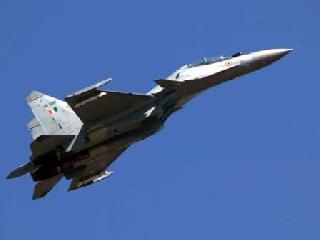WASHINGTON (PTI): Solar storms and associated Coronal Mass Ejections (CMEs) could significantly erode the lunar surface, according to a new set of computer simulations by NASA scientists.
In addition to removing a surprisingly large amount of material from the lunar surface, this could be a major method of atmospheric loss for planets like Mars that are unprotected by a global magnetic field, say the planetary scientists led by Rosemary Killen at NASA's Goddard Space Flight Center.
CMEs are basically an intense gust of the normal solar wind, a diffuse stream of electrically conductive gas called plasma that's blown outward from the surface of the Sun into space.
The moon has just the barest wisp of an atmosphere, technically called an exosphere because it is so tenuous, which leaves it vulnerable to CME effects. The plasma from CMEs impacts the lunar surface, and atoms from the surface are ejected in a process called "sputtering.
"We found that when this massive cloud of plasma strikes the moon, it acts like a sandblaster and easily removes volatile material from the surface.
"The model predicts 100 to 200 tons of lunar material -- the equivalent of 10 dump truck loads -- could be stripped off the lunar surface during the typical 2-day passage of a CME," said William Farrell, a team member.
This is the first time researchers have attempted to predict the effects of a CME on the moon. "Connecting various models together to mimic conditions during solar storms is a major goal of the DREAM project," said Farrell.
Plasma is created when energetic events, like intense heat or radiation, remove electrons from the atoms in a gas, turning the atoms into electrically charged particles -- ions.
The Sun is so hot that the gas is emitted in the form of free ions and electrons called the solar wind plasma. Ejection of atoms from a surface or an atmosphere by plasma ions is called sputtering.
"Sputtering is among the top five processes that create the moon's exosphere under normal solar conditions, but our model predicts that during a CME, it becomes the dominant method by far, with up to 50 times the yield of the other methods," said Killen.
The findings have been published in the 'Journal of Geophysical Research Planets'.
Solar storms 'could sandblast the moon'
Article Posted on : - Dec 08, 2011
Other Related News
NASA astronauts Butch Wilmore, Sunita Williams return to Earth after 9 months stuck in space
Stuck in space no more, NASA astronauts Butch Wilmore and Sunita Williams have returned to Earth, hitching a different ride home to close out a saga that began with a bungled test flight more than nine months ago.
 Next Article
Next Article












The Indian Air Force, in its flight trials evaluation report submitted before the Defence Ministry l..
view articleAn insight into the Medium Multi-Role Combat Aircraft competition...
view articleSky enthusiasts can now spot the International Space Station (ISS) commanded by Indian-American astr..
view article